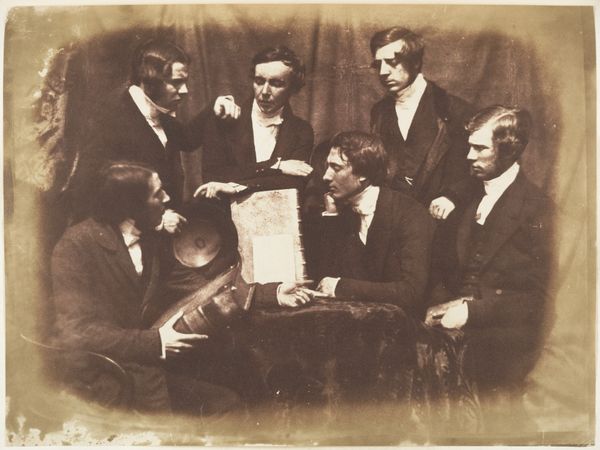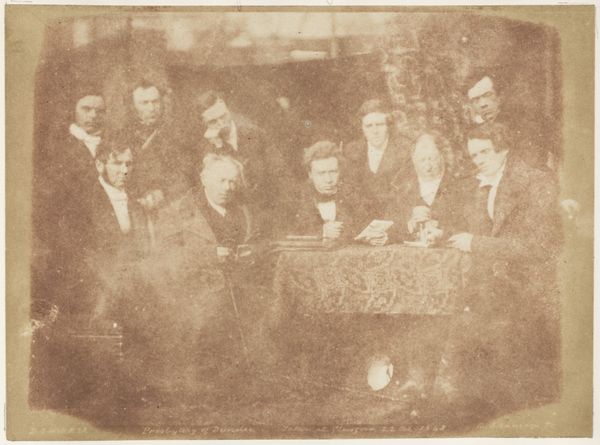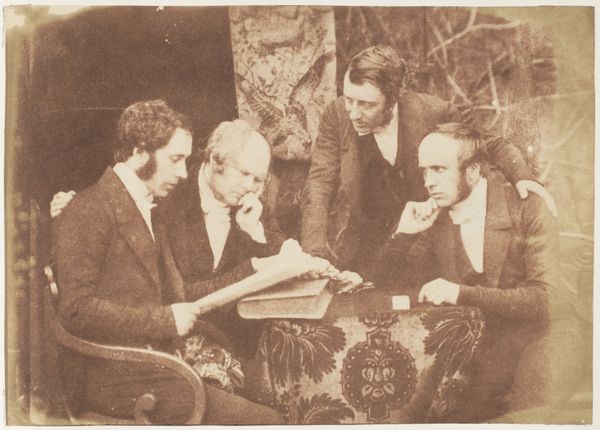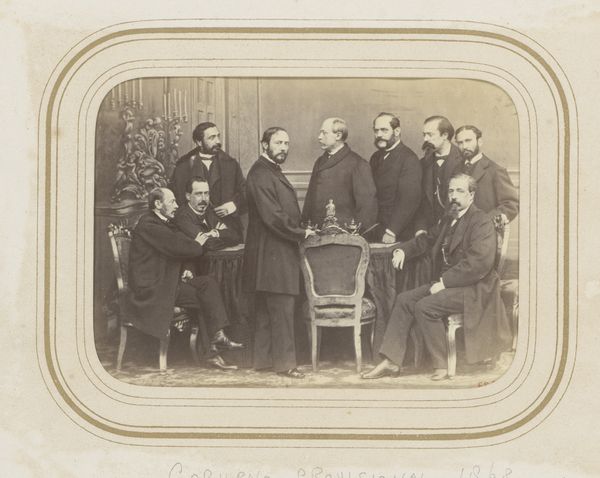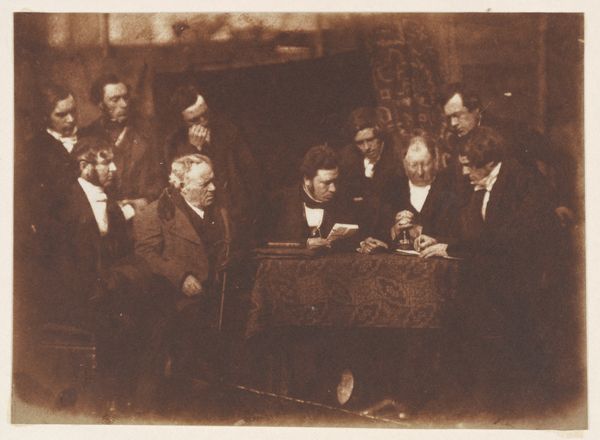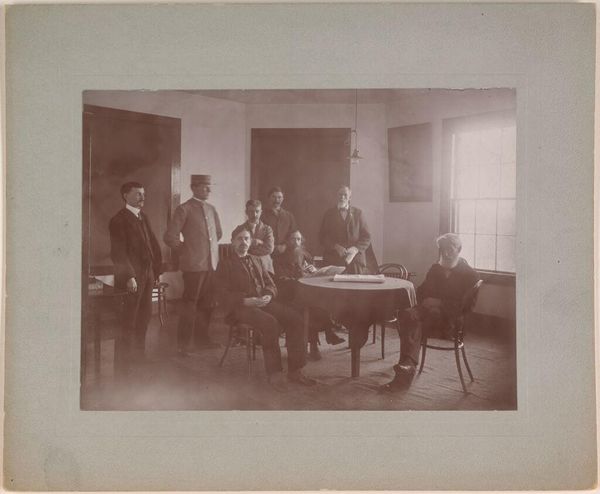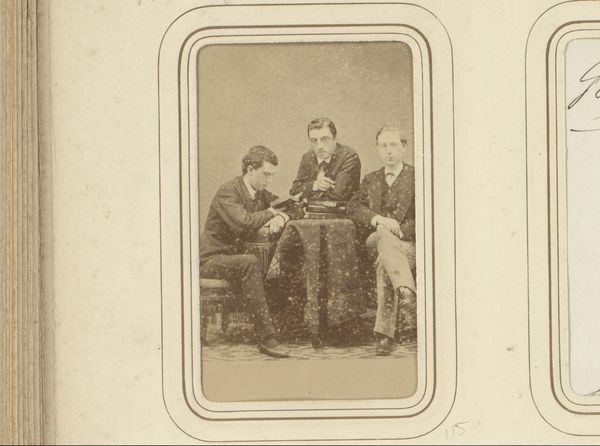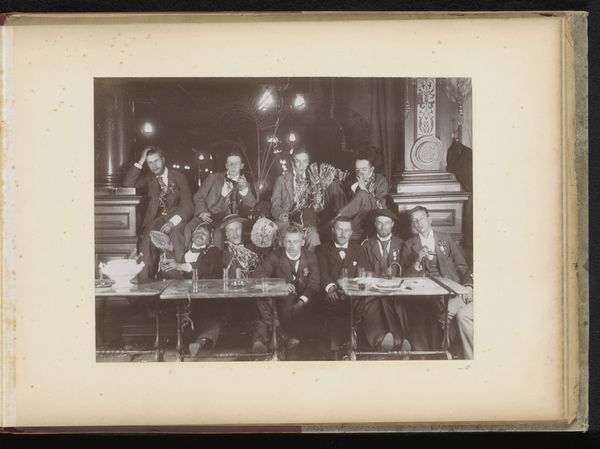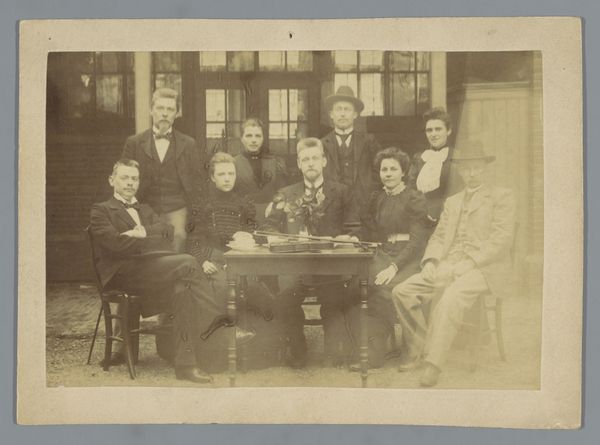
Prof. Fraser, Rev. Welsh, Rev. Hamilton, and Three Other Men 1843 - 1847
0:00
0:00
daguerreotype, photography
#
portrait
#
16_19th-century
#
daguerreotype
#
photography
#
historical photography
#
group-portraits
#
romanticism
#
scottish-colorists
#
men
Copyright: Public Domain
Curator: Here we have "Prof. Fraser, Rev. Welsh, Rev. Hamilton, and Three Other Men," a group portrait crafted between 1843 and 1847 by the pioneering duo Hill and Adamson. It's an excellent example of early photographic techniques. Editor: My initial reaction is drawn to the rather muted tones; everything blends, yet the contrast somehow makes it very sharp. The texture almost gives it a tangible feel. What kind of material are we looking at? Curator: This is a daguerreotype, one of the earliest commercially viable photographic processes. It utilized silver-plated copper, treated with chemicals to make it light-sensitive, then exposed in a camera. Editor: Fascinating. It highlights the scientific approach, and a fairly strenuous production involved in capturing even simple portraits. It’s a far cry from the instant snapshot culture we’re familiar with today. Considering the time taken to create this work, what does it suggest about the subject, this cluster of figures? Curator: Indeed, observe how their positioning isn't just arbitrary; they seem carefully arranged in a way that invites contemplation on the notions of fraternity and collective intellectual might. I am also struck by the somewhat obscured curtain, almost theatrical, serving perhaps to further idealize these sitters. Editor: Interesting point; it almost evokes a collaborative academic endeavor. You've got them huddling around what appears to be some volume or device, while the heavy folds of their garments echo the formal setting. To my eye, this feels deeply constructed—revealing something of the societal hierarchies implicit at play. Curator: Precisely. Hill and Adamson masterfully manipulated light and composition to enhance the subject's solemnity. We witness a dance of gazes. Their postures and positioning relative to one another are meant to communicate relationships and social positions without explicitly stating them. Editor: Which prompts me to wonder about the hands—notice the intentional way they hold objects or subtly gesture, all speaking to status and role. In light of the daguerreotype process then, wouldn't the effort also underscore these men’s elevated station, able as they were to commandeer resources? Curator: Exactly. By scrutinizing the interplay of light and shadow and these precise orientations within the frame, we decipher the cultural encoding prevalent at the time, not merely the subjects as individuals but also symbols within the early development of photography. Editor: Thank you. Thinking of that early labor intensivity underscores the degree to which we view images now as casual things divorced from physical effort. I see now a piece that encapsulates profound cultural values alongside the artistry in process.
Comments
No comments
Be the first to comment and join the conversation on the ultimate creative platform.
